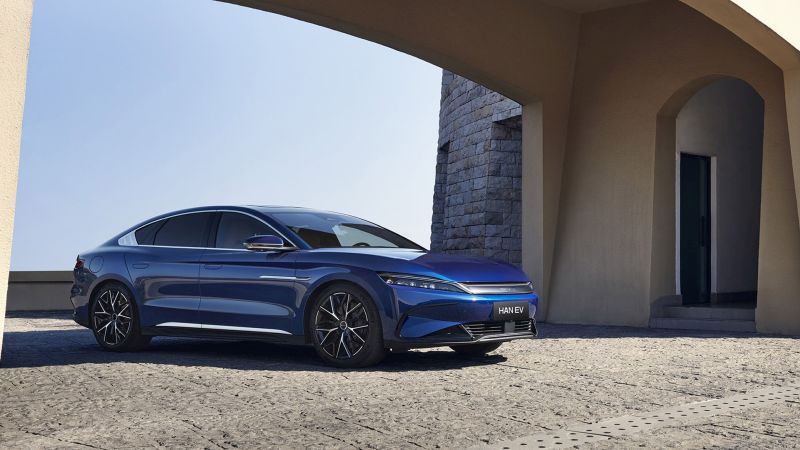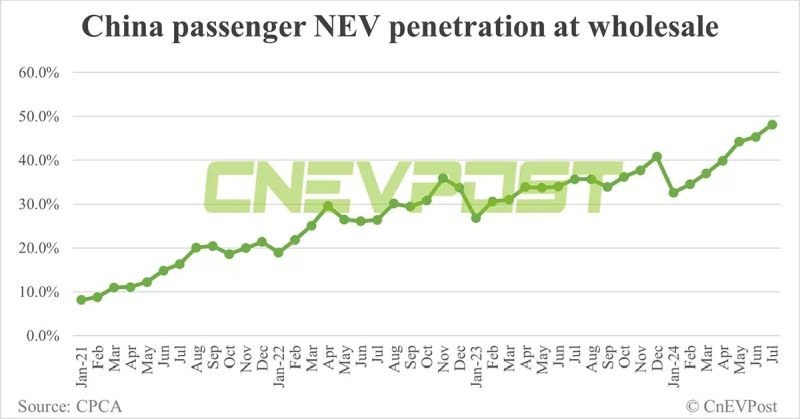It is generally accepted that the boom in electric vehicles in the Chinese market was predetermined by the targeted policy of the authorities, who subsidized not only the manufacturers of such vehicles, but also buyers. Even in ambiguous economic conditions, vehicles with new type power units (NEV) continue to expand in China; their share exceeded 50% for the first time in July.

Image source: BYD
This was reported by the CnEVPost resource with reference to the Chinese Passenger Car Manufacturers Association (CPCA). Hybrids and electric vehicles accounted for 51.1% of China’s primary auto market for the first time in July. In fact, vehicles powered exclusively by internal combustion engines were in the minority among those sold on the Chinese market last month. In quantitative terms, 878,000 hybrids and battery electric vehicles were sold in China in July, which is second only to the result of December last month, when sales volumes reached 947,347 units. The growth in sales volumes of hybrids and electric vehicles in annual comparison reached 36.9%, sequentially they increased by 2.8%.

Image source: CnEVPost
In general, by the term NEV, Chinese statistical authorities mean not only hybrids with internal combustion engines and battery electric vehicles, but also cars with hydrogen fuel cells, but their sales volumes are negligible. If we look at the structure of NEV sales in July, then 54.8% of vehicles sold in China during the month were battery electric vehicles – 482,000 units. This is 14.3% more than a year earlier, but 1.6% less than in June.
In fact, the strong growth in NEV sales is due to plug-in hybrids, of which 396,000 were sold in July. This is 80.4% more than in July last year, a sequential increase of 8.8%. Plug-in hybrids accounted for 45.1% of NEV sales in China in July. Statistics do not divide hybrids into subtypes, although they also differ in the layout of the power plant.
If we consider the dynamics of sales of passenger vehicles in China based on the results of July as a whole, then 1.72 million crossovers, sedans and minivans were sold during the month, compared to the result of a year ago, this is 2.8% less, and the consistent decrease reached 2 .6%. If we return to the NEV category, then in July last year their share in the primary car market in China did not exceed 36.1%, and in June of this year it amounted to 48.4%.
Among the products of Chinese manufacturers, the share of NEVs in July reached an impressive 73.9%, while in the luxury segment as a whole the figure did not exceed 27%. Foreign automakers that own joint ventures with Chinese partners offered hybrids and electric vehicles in only 8.3% of cases in July. Exports of passenger NEVs from China at the end of July increased year-on-year by 1.3% to 92,000 units, a sequential increase of 18.2%. Overall, nearly one in four new vehicles shipped outside China in July was either a hybrid or electric vehicle, with the latter accounting for 72.7% of July exports.